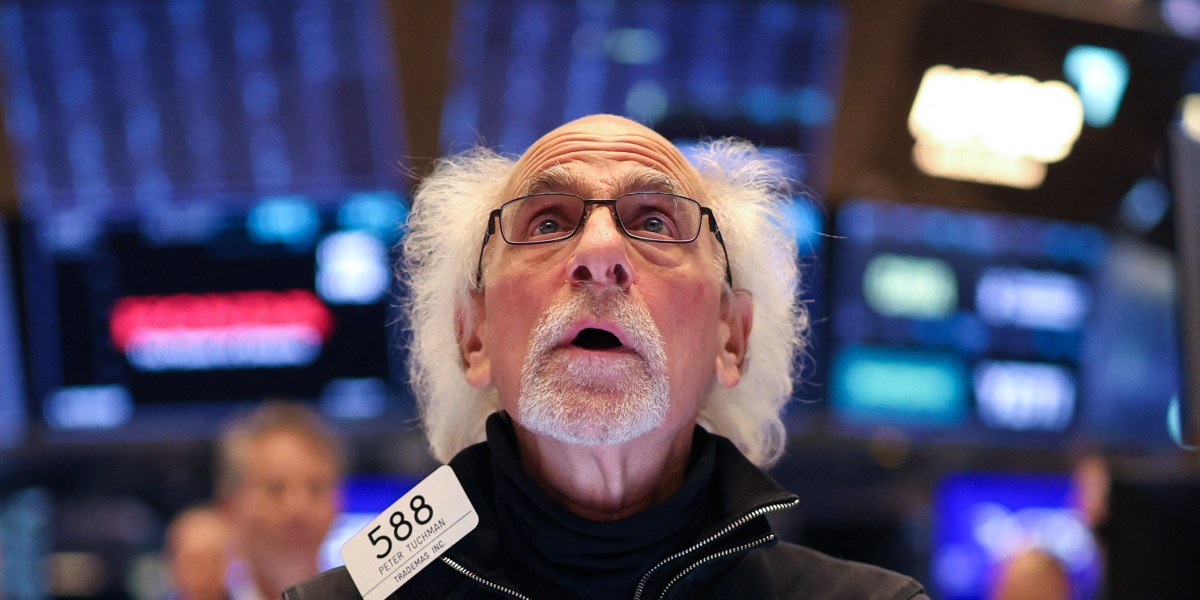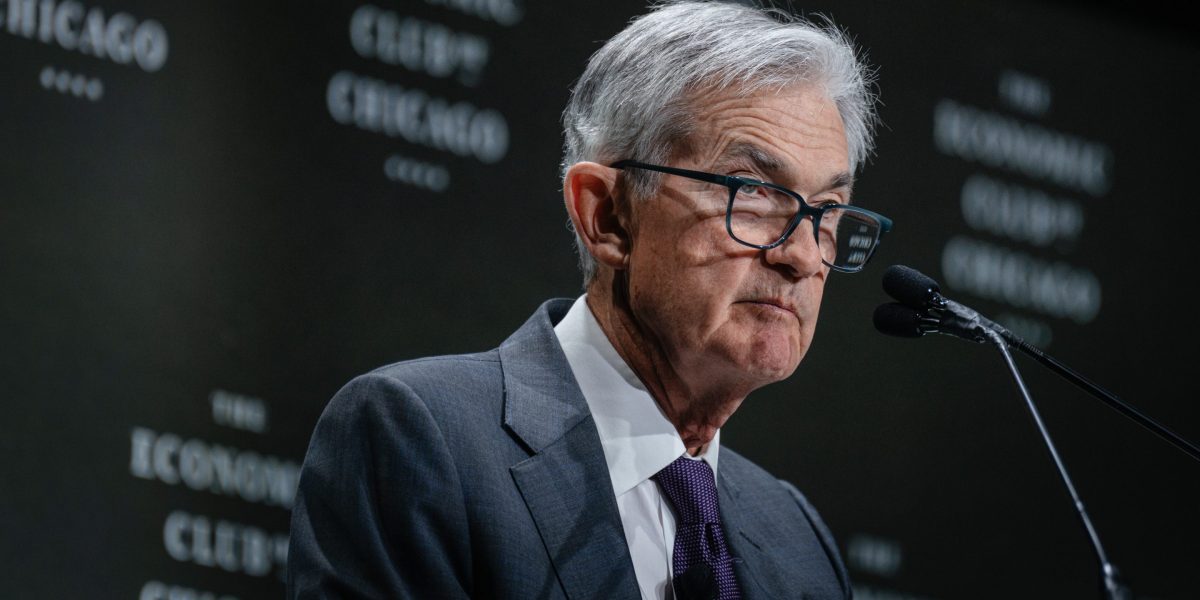- Inflation could rise and growth could slow as a result of President Donald Trump’s tariff policies, according to Federal Reserve chair Jerome Powell. During a speech on Wednesday, Powell said the Fed’s top goal was keeping price increases from Trump’s tariffs limited to a one-time event, so inflation doesn’t linger.
Federal Reserve chair Jerome Powell sounded his strongest warning to date about the impact of President Donald Trump’s on-again, off-again tariffs.
“The level of tariff increases announced so far is significantly larger than anticipated, and the same is likely to be true of the economic effects, which will include higher inflation and slower growth,” Powell said on Wednesday during a speech at the Economic Club of Chicago.
Tariffs would raise inflation and slow growth, Powell said, reiterating a point he made earlier this month. They have also weighed heavily on expectations businesses and consumers had about the economy.
“Surveys of households and businesses report a sharp decline in sentiment and elevated uncertainty about the outlook, largely reflecting trade policy concerns,” Powelll said.
The economy now faced “heightened downside risks,” Powell added—a stark acknowledgement of a possible economic downturn for the usually circumspect role of Federal Reserve chair.
In the time since Powell’s latest comments earlier this month, the White House retracted and then reenacted numerous parts of its original widespread tariff policy. Most notably, Trump paused the tariffs announced on April 2 for every country except China, which was hit with additional levies. His administration then granted exemptions to certain products like smartphones and semiconductors, until Trump personally intervened to reverse course on those exemptions. The constant back and forth created a backdrop of uncertainty for businesses and investors, many of whom were still reeling from the market crash Trump’s tariffs caused.
Powell saw it as “highly likely” tariffs would raise prices, but the key question the Fed was still evaluating is how long they would last.
“Our obligation is to keep longer term inflation expectations well anchored and to make certain that a one time increase in the price level does not become an ongoing inflation problem,” he said.
One of the key metrics the Fed watches in its assessments of the economy are long-term inflation expectations. If those rise, it means business leaders, investors, and the public at large see inflation as a chronic problem that won’t go away. When that happens, they’re much more likely to cut back on spending, which only raises the likelihood of a recession.
The latest CPI report from March measured inflation at 2.4%, slightly lower than expected. However, that read came before Trump implemented his tariff policy.
Since Powell last spoke, the economic turmoil of Trump’s tariffs made its way from the stock market to the bond market. Yields on 10-year and 30-year Treasuries soared at the same time as U.S. and global stocks were cratering. That gave the indication that scared investors were pulling their money out of stocks, and rather than parking it in U.S. bonds, considered the safest investments in the world, were actually selling those assets as well. Those dynamics signaled an unprecedented lack of faith in the U.S. economy.
“There isn’t a modern experience of how to think about this,” Powell said of the recently implemented tariff policy.
The moves in the bond market were unusual, according to Powell, who urged caution about jumping to conclusions about what caused them.
“It’s the markets processing historically unique developments and with great uncertainty,” Powell said. “I think you’ll probably see continued volatility, but I wouldn’t try to be definitive about exactly what’s causing that.”
As is customary, Powell did not tip his hand about upcoming monetary policy moves or when they would happen. Instead, Powell said that the relative strength of the U.S. economy had bought the Fed time before needing to make a decision.
“For the time being, we are well positioned to wait for greater clarity before considering any adjustments to our policy stance,” he said.
Trump’s tariffs are almost certain to raise prices for businesses and consumers, which would hamper the Fed’s yearslong efforts to bring down inflation. In that scenario, rate hikes might be warranted. However, that would be a reversal from the rate-cutting cycle the Fed has been in since September. At the same time, rate cuts would be warranted if the U.S. economy enters a recession. The worst-case scenario is stagflation, which is when inflation is high but the economy doesn’t grow. Powell defined that particular scenario as a “challenging” one in which the Fed’s dual mandate goals of full employment and stable prices would be “in tension.”
“It’s a difficult place for central banks to be in,” Powell said.
In short, the range of outcomes for what the Fed might, or should do, is only widening.
The market is currently pricing in between two and three rate cuts in 2025 starting in the second half of the year. But those plans could be subject to change given how volatile things are across the economy.
“Markets are struggling with a lot of uncertainty, and that means volatility,” Powell said.
This story was originally featured on Fortune.com
Source link


 Entertainment8 years ago
Entertainment8 years ago
 Politics8 years ago
Politics8 years ago
 Entertainment8 years ago
Entertainment8 years ago
 Entertainment8 years ago
Entertainment8 years ago
 Tech8 years ago
Tech8 years ago
 Tech8 years ago
Tech8 years ago
 Tech8 years ago
Tech8 years ago
 Tech8 years ago
Tech8 years ago






